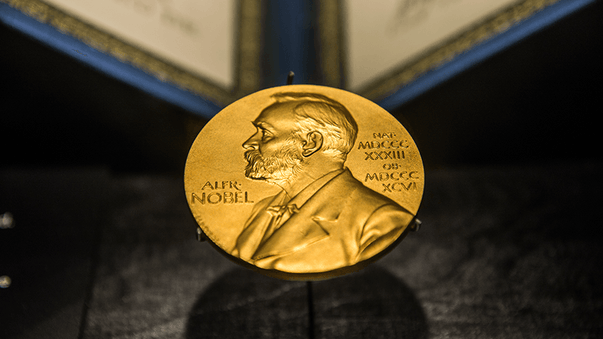Corrective Gene Editing Before Birth

The scientists who demonstrated a first example of corrective gene editing to treat a disease in utero in animal models (see below) “are excited about the potential of this approach,” according to study co-leader William H. Peranteau. He nonetheless cautioned that a “significant amount of work needs to be done before prenatal gene editing can be translated to the clinic, including investigations into more clinically relevant delivery mechanisms and ensuring the safety of this approach.”
Proof of Concept for corrective gene editing before birth. Scientists at the Children's Hospital of Philadelphia (CHOP) and the Perelman School of Medicine at the University of Pennsylvania have performed prenatal gene editing to prevent a lethal metabolic disorder in laboratory animals, offering the potential to treat human congenital diseases before birth. A study published in Nature Medicine presents a proof-of-concept for prenatal use of a sophisticated, low-toxicity tool based on CRISPR-Cas9 and base editor 3 (BE3) gene-editing, which efficiently edits DNA building blocks in disease-causing genes.
CRISPR-GO reorganizes the genome in 3D. Researchers at Stanford University have reworked CRISPR-Cas9 gene-editing technology to manipulate the genome in three-dimensional space, allowing them to ferry genetic snippets to different locations in a cell's nucleus. The new technique, dubbed CRISPR-genome organization or simply CRISPR-GO, is described in a study published in Cell. CRISPR-GO uses a modified CRISPR protein to reorganize the genome in three dimensions. If CRISPR is like molecular scissors, then CRISPR-GO is like molecular tweezers, grabbing specific bits of the genome and plunking them down in new locations of the nucleus, which also changes how they function.
CAR-T immunotherapy offers potential cure for advanced pancreatic cancer. Scientists at Queen Mary University have developed a new “extremely promising” approach to treating pancreatic cancer. A research paper published in Gut describes how the scientists used pancreatic cancer cells from patients with late-stage disease, and transplanted them into mice. They then took the immune cells of the patients and modified them to specifically identify and eliminate the cancer cells - creating “educated” CAR-T killer cells. The researchers also introduced a new technology that allowed them to completely control the activity of CAR-T cells, making them potentially safer.
Therapeutic applications of 3D-printed human tissues. Researchers at University of Utah have developed a method to 3D print cells to produce human tissue such as ligaments and tendons to greatly improve a patient's recovery. A person with a badly damaged ligament, tendon, or ruptured disc could simply have new replacement tissue printed and ultimately implanted in the damaged area. The new method, developed in partnership with the Salt Lake City-based company Carterra and described in a study published in Tissue Engineering Part C: Methods, involves taking stem cells from the patient's own body fat and printing them on a layer of hydrogel to form a tendon or ligament which would later grow in vitro in a culture before being implanted.
Next-generation CAR-T cancer immunotherapies. Scientists at Imperial College London are suggesting that a type of “supercharged” immune cell could be mass-produced to help fight cancer. According to the researchers, this development could mark the next generation of cutting-edge immunotherapy treatments, called CAR-T therapies. A study published in Cancer Cell describes how the scientists created a genetically engineered version of a cell called an invariant natural killer T-cell, CAR19-iNKT, which eliminated all cancer cells in 60 percent of the laboratory mice used in the study, with 90 percent of animals surviving long-term. The scientists are now considering human trials.
Chinese Knotweed root extract extends the life of worms. Nutritional scientists at Martin Luther University Halle-Wittenberg (MLU) have found that a root extract of the Fallopia multiflora, or Chinese knotweed, has special properties: it enables the nematode C. elegans to live longer and protects it from oxidative stress. A research paper published in Plants presents evidence for the effectiveness of this extract, which is primarily used in traditional Chinese medicine and as a dietary supplement, and identifies molecular signaling pathways that could be responsible for the extract's effect.
Implantable, biodegradable electrical stimulation device for nerve regeneration. Researchers at Washington University School of Medicine and Northwestern University have developed an implantable, biodegradable device, the size of a quarter, which delivers regular pulses of electricity to damaged peripheral nerves in rats, helping the animals regrow nerves in their legs and recover their nerve function and muscle strength more quickly. The device, described in a research paper published in Nature Medicine, lasts about two weeks before being completely absorbed into the body. This development has been described as the “first example of a bioresorbable electronic medicine.”
More Articles
Don't miss a beat! In our Pulse Newsletter, Thrivous curates the most important news on health science and human enhancement, so you can stay informed without wasting time on hype and trivia. It's part of the free Thrivous newsletter. Subscribe now to receive email about human enhancement, nootropics, and geroprotectors, as well as company news and deals.
Read more articles at Thrivous, the human enhancement company. You can browse recent articles in Thrivous Views. See other Pulse Newsletter articles. Or check out an article below.
-
Supplement Science Updates with Connie Packer
Hi. My name is Connie Packer. I'm a registered dietitian. My view of health started to develop when I was ...
-
2018 Nobel Prize for Cancer Immunotherapy
The Nobel Assembly at Karolinska Institutet has awarded the 2018 Nobel Prize in Physiology or Medicine jointly to James P. ...


